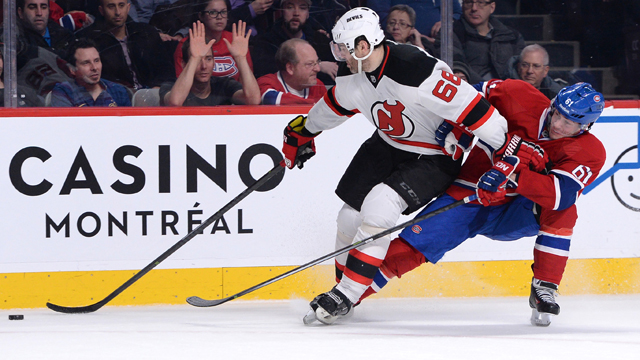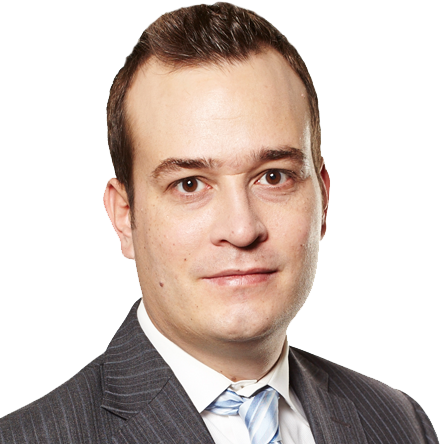The Montreal Canadiens are a disaster. All of the good that the Habs achieved last season is disappearing as they become one of the worst possession teams in hockey. There’s a strong argument that at least part of this problem can be attributed to Michel Therrien.
The impact of hockey coaches on the results that a team achieves is a pretty hotly debated topic in analytic circles. The best thinking on the topic can be summed up in a sentence: A good coach might only win you an extra one or two games a year but you can lose 10 thanks to a bad coach. The numbers aren’t precise but they convey an idea. There are lots of people who have the right idea about how to win hockey games, more than enough to fill the spots on NHL benches. The people who don’t have the right ideas can sound compelling and even achieve success with enough talent. They can also do a tremendous amount of damage to a team that’s otherwise competent.
His current gig in Montreal is Therrien’s third as an NHL coach. He previously coached the Canadiens from 2000 to 2003 and the Penguins from 2006 to 2009. There’s an interesting trend that seems to follow Therrien around: When teams hire him, they see their share of the even strength shot attempts decrease. When they fire him, they see their share of the even strength shot attempts increase. This trend, which hockey analysts measure with Corsi%, matters because it’s closely linked to the volume of scoring chances that you give up. Not all shot attempts are scoring chances, but the more the opposition is playing in your end, the greater the opportunity for a mistake to be made that allows a scoring chance. The lower your share of the scoring chances, the less likely you are to win a given game.
Therrien was first hired by the Canadiens in November of 2000. He replaced Alain Vigneault, fired after the Habs started 5-13-2. We don’t have 5v5 data from Vigneault’s time as Montreal’s coach, but we do have even-strength/shorthanded shots-for and against, which is close enough for our purposes.
In Vigneault’s three full seasons with the Canadiens, the team took 49.7 percent of the ES/SH shots in its games. In the shared Vigneault-Therrien season, that number was 47.6 percent. In 2001-02, Therrien’s only full season in Montreal, it fell to 44.4 percent. In 2002-03, when Therrien was fired after 46 games and replaced by Claude Julien, the Habs took just 44 percent of the ES/SH shots. In 2003-04, Julien’s first full year, that number rebounded to 47.9% and Les Glorieux were a playoff team again.
After being dismissed in Montreal, Therrien landed with Scranton/Wilkes-Barre in the American Hockey League. When Pittsburgh fired Ed Olczyk 31 games into the 2005-06 season, Therrien was bumped up into the most promising bench-boss job in the world: coaching Pittsburgh with Sidney Crosby and the rights to Evgeni Malkin.
The Pens had a great deal of success under Therrien. They made the playoffs for the first time during the Crosby era in 2006-07 and went to the Stanley Cup Final the next season, losing in six games to Detroit. Despite this success, Therrien’s Penguins teams were never much for puck possession. The ’05-06 Pens were a disaster, taking 45.7 percent of the ES/SH shots. In ’06-07, that improved to 47.2 percent. The first year we have Corsi% data available is 2007-08. The Pens scored a 45.4 percent Corsi%. They had success and went to the Cup Final on the back of pretty good 5v5 shooting (8.95 percent) and an unbelievable save percentage (0.933). Those things tend not to last, though, and the clock struck midnight the following season.
On Feb. 15, 2009, with the Penguins stumbling along at 27-25-5, Therrien was fired. As in the the previous season, then Pens were a terrible possession team, with a 45.8 percent Corsi%. The hockey gods weren’t as kind as in ’07-08 though and the Penguins’ increase in 5v5 shooting percentage was more than outweighed by the decline in their save percentage. Dan Bylsma replaced Therrien and things went pretty well. In the final 25 games of the season, the Penguins were a 51.6 percent Corsi%-team and they won the Stanley Cup. They’re fourth in the NHL in Corsi% in Bylsma’s four full seasons since then, at 52.4 percent.
On June 5, 2012, Therrien was announced as the new coach of the Canadiens. Montreal was coming off a difficult season, one in which Jacques Martin was fired mid-season and replaced with Randy Cunneyworth. Despite the bad season, the Canadiens were a trendy pick to enjoy a bounce-back season in hockey analytics circles. They were extremely poor at turning goal difference into wins in 2011-12. If you take empty net goals out, the Canadiens scored 202 times and allowed 204 that season. Florida, which was extremely efficient at turning goal difference into points, scored 186 goals and allowed 209. Montreal earned 78 points and picked third in the draft. Florida won its division with 94 points. That’s hockey.
The Canadiens did enjoy a big improvement in 2012-13, winning their division with 63 points. For the first time in Therrien’s career, a team that he coached had a strong Corsi%—Montreal finished the year at 52.8 percent, a significant improvement on the previous year’s 48.0 percent. But this year, the Canadiens have regressed spectacularly. After posting a 52.9 percent Corsi% through their first nine games, the Habs have played 44 games at a 45.6 percent—they’re at 47.0 percent for the season. If that number holds for the campaign, it will be the Habs worst season since 2007-08.
This isn’t to say that the problem is Therrien and that the Habs could fix things by replacing him. It is, however, a very disturbing pattern in Therrien’s career. When he comes in, things seem to get worse. When he exits, they improve. It’s been widely reported that Montreal GM Marc Bergevin is loathe to fire Therrien. Given that, the Canadiens are well-advised to devote their resources to isolating how Julien and Bylsma changed the play of the teams that they inherited from Therrien.
Understanding those changes, whatever they may be, might allow the Habs to isolate the problems that are apparently created by Therrien’s methods. If they don’t do that now, history suggests that some other coach will be doing so in the near future.

